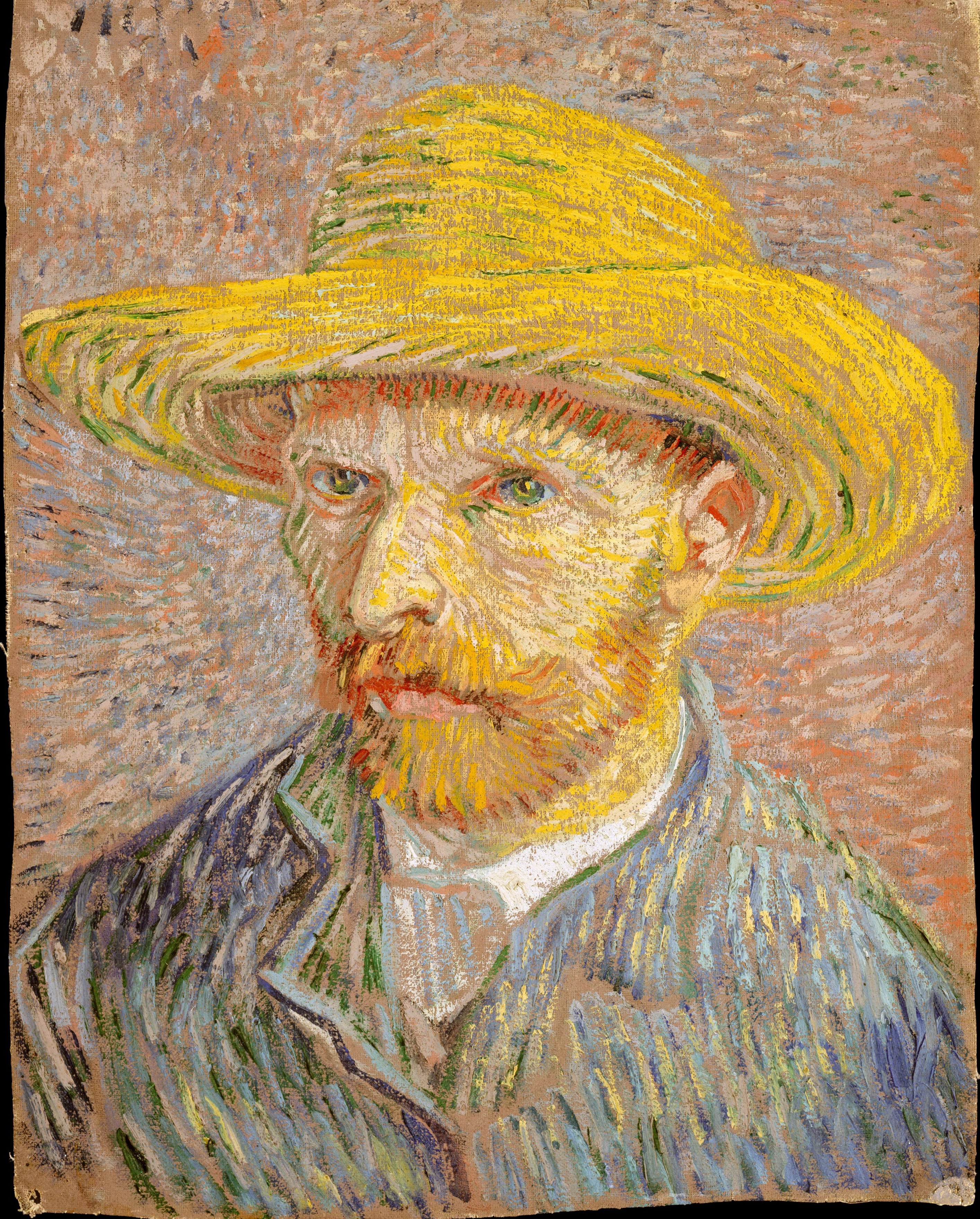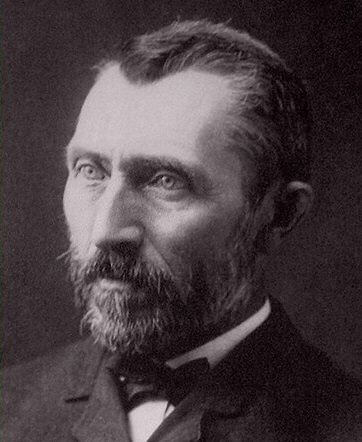
Van Gogh: Self-Portrait with a Straw Hat
During his transformative Parisian period (1886–88), Vincent van Gogh painted more than twenty self-portraits, each one a testament to both his restless experimentation and his relentless self-examination. Living in relative poverty but determined to master the challenges of figure painting, Van Gogh turned to the most readily available model—himself. “I purposely bought a good enough mirror to work from myself,” he wrote, “for want of a model.” In these self-portraits, he not only studied form, light, and color, but also wrestled with his evolving identity as an artist.
This particular work reveals Van Gogh’s growing engagement with Neo-Impressionist techniques and the emerging principles of modern color theory, which he encountered in Paris through artists like Georges Seurat and Paul Signac. The brushwork is bold yet calculated, built from rhythmic strokes and carefully modulated tones. The palette hums with cool blues, warm ochres, and subtle contrasts that animate the surface and convey both depth and psychological nuance.
What sets this portrait apart, beyond its stylistic experimentation, is its humble material history. The canvas was reused—painted on the reverse side of an earlier study of a peasant, a nod to Van Gogh’s ongoing concern with rural life and labor, themes he carried from his time in the Netherlands. This act of repurposing speaks to both economic necessity and the artist’s belief in continuity between his early realist efforts and his newer, more expressive approach.
The result is more than a likeness—it is a deeply introspective image that captures Van Gogh in a moment of transition, absorbing the artistic innovations of Paris while holding onto the emotional sincerity that defined his vision. His gaze is steady, probing, as if scrutinizing not only his reflection, but the very essence of what it means to be an artist in search of truth through paint.
Choose options


Van Gogh: Self-Portrait with a Straw Hat
About Artist

Vincent van Gogh
